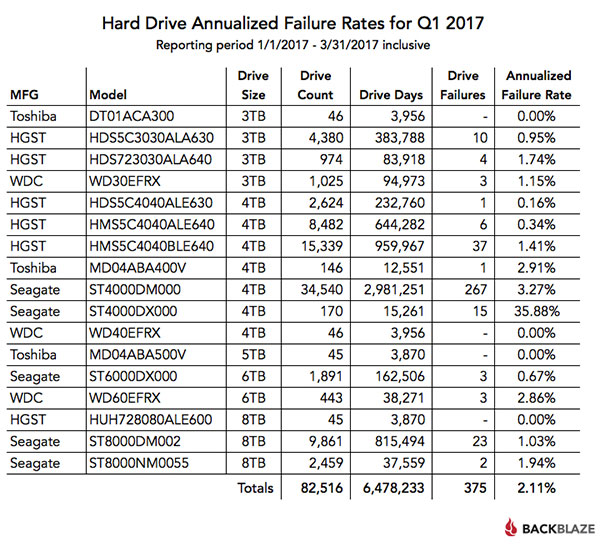Safer storage: Popular backup service Backblaze offers an updated look at their hard drive failure rates
posted Tuesday, June 13, 2017 at 10:30 AM EDT

The latest and greatest camera and lens technology helps us capture better images, but all these photos and videos need to be stored somewhere. As cameras offer more resolving power and files get larger, speed is important too. But perhaps no aspect of a drive matters more to a photographer, especially if they don’t have an excellent backup workflow, than reliability. Reliability is not something you typically think about with a hard drive until something goes wrong and no individual photographer has enough hard drives to make any meaningful conclusions about drive reliability. Popular backup service Backblaze, on the other hand, has tens of thousands of hard drives and can glean a lot of information about hard drive reliability.
In a recent blog post, Backblaze looked at their hard drive failure rates and updated their lifetime failure rate list. The hard drive set includes 84,469 operational hard drives, of which 1,800 were boot drives and 82,669 were data drives. They remove models of which they have less than 45 individual drives, which left a total of 82,516 drives for the latest report. There are 17 different models in use, ranging from 3 to 8 terabytes in size. All of them are 3.5-inch drives. You can see the updated annualized failure rate table below.

During the first quarter of this year, Backblaze experienced 375 drive failures. A drive failure includes a drive which will not spin up or connect to the operating system, a drive which will not sync or stay synced in a RAID array and drives whose Smart Stats show values above their acceptable threshold. The annualized hard drive failure rate for the first quarter was 2.11 percent, which is higher than in previous quarters. The team theorizes that this could be due to the high number of new drives they added, noting that new drives tend to fail early on.
To see additional charts, covering the annualized failure rates and more, click here. To learn more about Backblaze’s backup service – which I personally have been very happy with – click here.
(Via SLR Lounge)